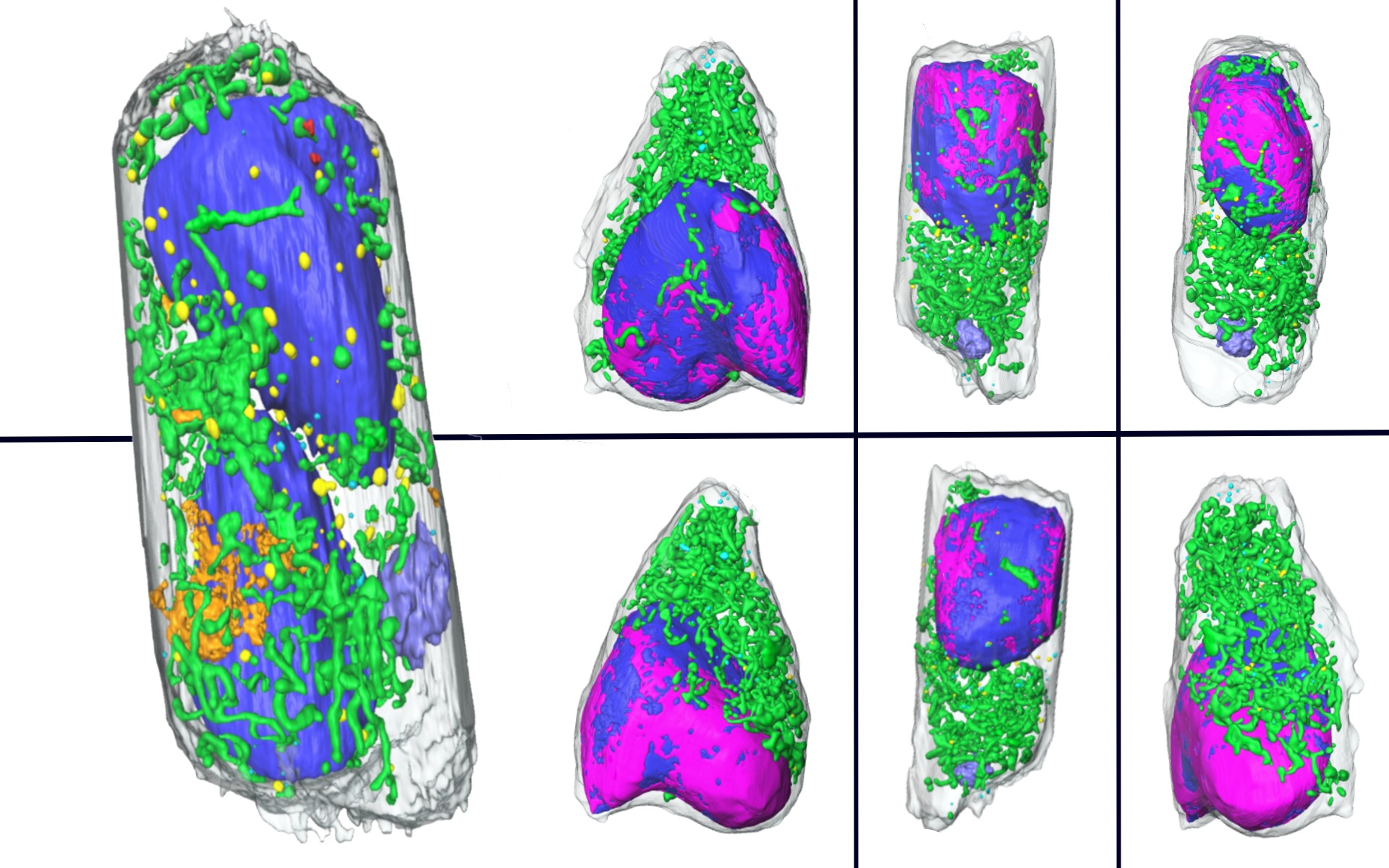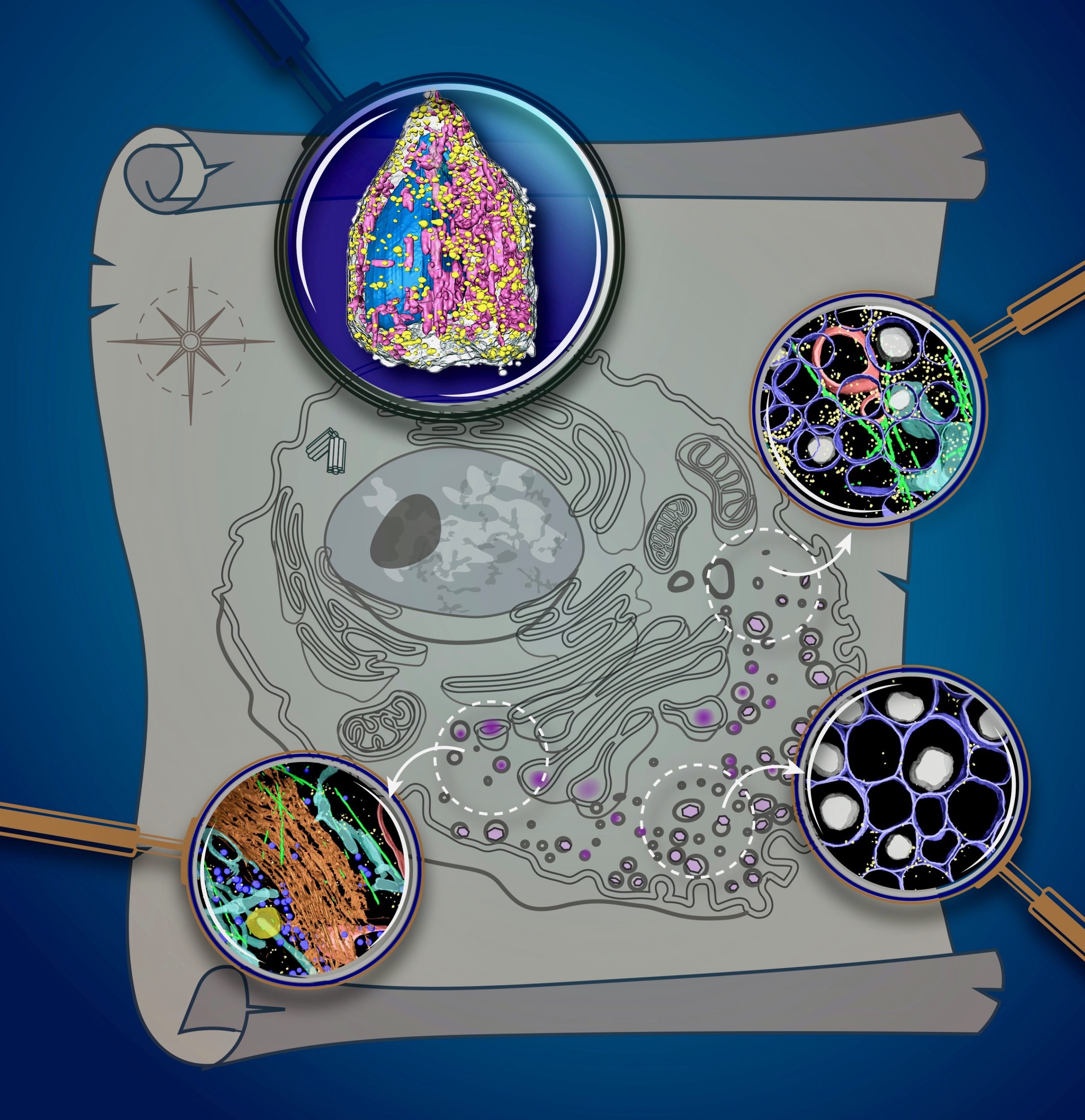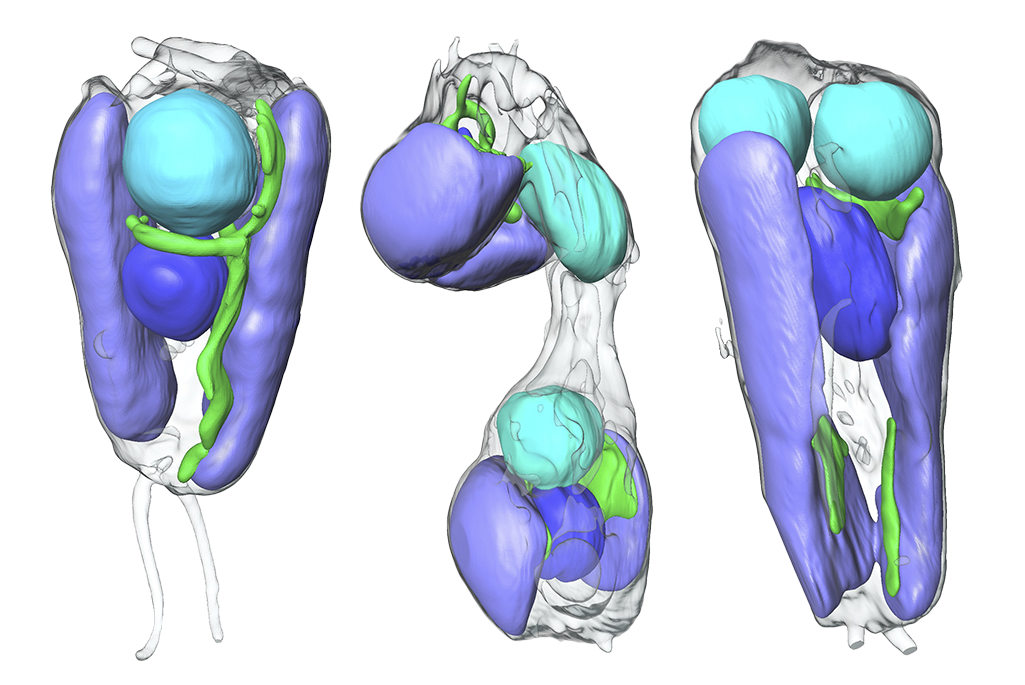Adapted from a release by Erin Malsbury at UC Santa Cruz
Modern biology textbooks assert that only bacteria can take nitrogen from the atmosphere and convert it into a form that is usable for life. Plants that fix nitrogen, such as legumes, do so by harboring symbiotic bacteria in root nodules. But a recent discovery upends that rule.
In two recent papers, an international team of scientists describe the first known nitrogen-fixing organelle within a eukaryotic cell. The organelle is the fourth example in history of primary endosymbiosis – the process by which a prokaryotic cell is engulfed by a eukaryotic cell and evolves beyond symbiosis into an organelle.
“It’s very rare that organelles arise from these types of things,” said Tyler Coale, a postdoctoral scholar at UC Santa Cruz and first author on one of two recent papers. “The first time we think it happened, it gave rise to all complex life. Everything more complicated than a bacterial cell owes its existence to that event,” he said, referring to the origins of the mitochondria. “A billion years ago or so, it happened again with the chloroplast, and that gave us plants,” Coale said.
The third known instance involves a microbe similar to a chloroplast. The organelle in this discovery has been named a nitroplast.
A decades-long mystery
The discovery of the organelle involved a bit of luck and decades of work. In 1998, Jonathan Zehr, a UC Santa Cruz distinguished professor of marine sciences, found a short DNA sequence of what appeared to be from an unknown nitrogen-fixing cyanobacterium in Pacific Ocean seawater. Zehr and colleagues spent years studying the mystery organism, which they called UCYN-A.
At the same time, Kyoko Hagino, a paleontologist at Kochi University in Japan, was painstakingly trying to culture a marine alga. It turned out to be the host organism for UCYN-A. It took her over 300 sampling expeditions and more than a decade, but Hagino eventually successfully grew the alga in culture, allowing other researchers to begin studying UCYN-A and its marine alga host together in the lab.
For years, the scientists considered UCYN-A an endosymbiont that was closely associated with an alga. But the two recent papers suggest that UCYN-A has co-evolved with its host past symbiosis and now fits criteria for an organelle.
Organelle origins
In a paper published in Cell in March, Zehr and colleagues from the Massachusetts Institute of Technology, Institut de Ciències del Mar in Barcelona and the University of Rhode Island show that the size ratio between UCYN-A and their algal hosts is similar across different species of the marine haptophyte algae Braarudosphaera bigelowii.
The researchers use a model to demonstrate that the growth of the host cell and UCYN-A are controlled by the exchange of nutrients. Their metabolisms are linked. This synchronization in growth rates led the researchers to call UCYN-A “organelle-like.”
“That’s exactly what happens with organelles,” said Zehr. “If you look at the mitochondria and the chloroplast, it’s the same thing: they scale with the cell.”
But the scientists did not confidently call UCYN-A an organelle until confirming other lines of evidence. In the cover article of the journal Science, published last week, the UC Santa Cruz team and collaborators from Lawrence Berkeley National Laboratory (Berkeley Lab), UC San Francisco, National Taiwan Ocean University, and Kochi University in Japan show that UCYN-A relies on proteins from its host cells and that the organelle’s process of replication and division is tightly paired with the algal cell’s process.
“Until this paper, there was still a question of is this still an ‘endosymbiont’, or has it become a true organelle?” said co-author Carolyn Larabell, a senior faculty scientist in Berkeley Lab’s Biosciences Area and Director of the National Center for X-Ray Tomography. “We showed with X-ray imaging that the process of replication and division of the algal host and endosymbiont is synchronized, which provided the first strong evidence.”
Larabell has been collaborating with Zehr for several years to study the relationship between UCYN-A and the alga using the advanced soft X-ray tomography approach she co-developed at Berkeley Lab’s Advanced Light Source, a particle accelerator that produces X-rays. Her technique allows scientists to rapidly visualize internal components of cells in real-time, under real-life conditions.
Valentina Loconte, a research scientist in Larabell’s group, performed the tomography on a large number of B. bigelowii cells, then analyzed the data to generate detailed images showing the organelle’s movements within the alga at all stages of replication.
“That’s the beauty of our technology. We can get numbers to make quantitative statements. We have numbers at each stage of the cell cycle to show that this isn’t a quirk,” said Larabell.
Meanwhile, Coale compared proteins found within isolated UCYN-A with those found in the entire algal host cell. He found that around half of the proteins in UCYN-A are made by the algal host cell, then labeled with a specific amino acid sequence, which tells the cell to send them to the nitroplast. The nitroplast then imports the proteins and uses them.
“That’s one of the hallmarks of something moving from an endosymbiont to an organelle,” said Zehr. “They start throwing away pieces of DNA, and their genomes get smaller and smaller, and they start depending on the mother cell for those gene products – or the protein itself – to be transported into the cell.”
This dependent relationship, taken together with the images of synchronized division, shows that UCYN-A deserves organelle status.
Changing perspectives
While mitochondria and chloroplasts evolved billions of years ago, the nitroplast appears to have evolved about 100 million years ago, providing scientists with a new, more recent perspective on organellogenesis.
The organelle also provides insight into ocean ecosystems. All organisms need nitrogen in a biologically usable form, and rely on nitrogen fixers to break apart tightly bound nitrogen gas (N2) in the atmosphere, and convert it into ammonia (NH3) molecules that can then be made into countless other compounds. Researchers have found UCYN-A everywhere from the tropics to the Arctic Ocean, and it fixes a significant amount of nitrogen.
The discovery also has the potential to change agriculture. The ability to synthesize ammonia fertilizers from atmospheric nitrogen allowed agriculture – and the world population – to take off in the early 20th century. Known as the Haber-Bosch process, it makes possible about 50% of the world’s food production. It also creates enormous amounts of carbon dioxide: about 1.4% of global emissions come from the process. For decades, researchers have tried to figure out a way to incorporate natural nitrogen fixation into agriculture.
“This system is a new perspective on nitrogen fixation, and it might provide clues into how such an organelle could be engineered into crop plants,” said Coale.
But plenty of questions about UCYN-A and its algal host remain unanswered. The researchers plan to delve deeper into how UCYN-A and the alga operate and study different strains.
Kendra Turk-Kubo, an assistant professor at UC Santa Cruz, will continue the research in her new lab. Zehr expects scientists will find other organisms with evolutionary stories similar to UCYN-A, but as the first of its kind, this discovery is one for the textbooks.
This research was funded by the Simons Foundation, National Institute of General Medical Sciences, and the Department of Energy (DOE) Office of Science Office of Biological and Environmental Research. The Advanced Light Source is a DOE Office of Science user facility.
###
Lawrence Berkeley National Laboratory (Berkeley Lab) is committed to delivering solutions for humankind through research in clean energy, a healthy planet, and discovery science. Founded in 1931 on the belief that the biggest problems are best addressed by teams, Berkeley Lab and its scientists have been recognized with 16 Nobel Prizes. Researchers from around the world rely on the Lab’s world-class scientific facilities for their own pioneering research. Berkeley Lab is a multiprogram national laboratory managed by the University of California for the U.S. Department of Energy’s Office of Science.
DOE’s Office of Science is the single largest supporter of basic research in the physical sciences in the United States, and is working to address some of the most pressing challenges of our time. For more information, please visit energy.gov/science.



